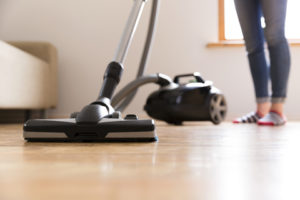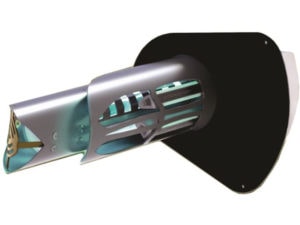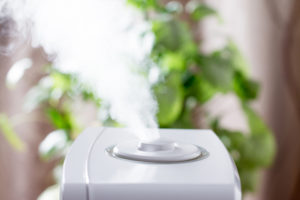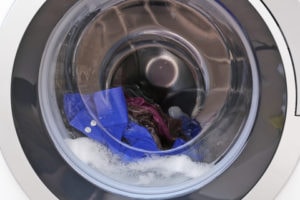How To Ease Asthma Symptoms At Home This Winter

How to Ease Asthma Symptoms in Your Home This Winter
Winter’s a tough time for people with asthma and other upper respiratory problems. And no, it’s not because the air is cold. Instead, their symptoms often flare up because of the quality of the air in their homes.
According to recent studies, we spend something like 90 percent of our time indoors nowadays.
And, the air in there isn’t always healthy. It’s usually worse than it is outside.
In the winter, it’s especially a problem. Year-round, all those pollutants outside make their way into your home. But, when it’s cold out, you’ve got the windows closed and the heat running.
So, those contaminants can’t escape back outside. And, your HVAC system circulates them throughout the house.
The good news, however, is that there are plenty of ways to address these problems. It may be easier than you think to ease your asthma symptoms this winter.
In this post, we’ll look at five ways to improve your indoor air quality during the cold weather. Some of them are DIY strategies. Others require a professional.
Meanwhile, if you have any questions, call or email us. We’re happy to help you find the solutions that work best for your home.
Five Steps to Ease Asthma Symptoms in the Winter
These steps will help asthma sufferers breathe better at home in the winter:
- Start With an Air Quality Test
- Get on a Strategic Cleaning Schedule
- Use a Whole-House Air Purifier
- Upgrade Your Air Filters
- Add Moisture With Humidifiers
Let’s break these down.
Start With an Air Quality Test

You’ll get a report outlining which contaminants and allergens are present. That’s everything from dander, pollen, and dust to radon, lead, and even carbon monoxide.
It’ll also tell you how your heating and cooling system affects things. And, you’ll get a list of strategies and tools to address all this.
Get On a Strategic Cleaning Schedule

- Planning a Weekly Cleaning Routine
- Using a Small-Particle Filter Vacuum Cleaner
- Wash linens in 130-Degree Water
Here’s a closer look at each of these.
Plan A Weekly Cleaning Routine
This is more than just straightening up and doing some dusting, sweeping, or vacuuming.
First, you want to focus on places where dust and other contaminants settle. So, start by wiping down counters, windowsill, tables, and the tops of doors with a damp cloth.
This is especially important. People tend to skip areas like the tops of doors and window sills most of the time. And, using a little water helps trap those particles instead of moving them around.
You also want to focus on cabinets, especially ones with small grooves and ridges. And, finally, remember to mop so you capture anything that you kicked up but didn’t catch before.
Small-Particle Filter Vacuum Cleaner
Next, you’ll want to vacuum. But, not just with a run-of-the-mill appliance.
Invest in a vacuum cleaner with a small-particle filter. Use that on all your rugs and carpets. It will capture more of the tiny allergens and other particles that cause respiratory problems.
 Wash Linens in 130-Degree Water
Wash Linens in 130-Degree Water
Run your sheets, blankets, and pillowcases through the wash with the water at 130 degrees or warmer. That’s usually the “high” setting.
At that temperature, you’ll get rid of more dust mites and bacteria that may make it through a cycle at a lower temperature.
However, you do run the risk of colors bleeding or fading faster. So, give new linens a wash or two at a lower setting. Then, start running them through hotter water.
Use a Whole-House Air Purifier

And, they work hand-in-hand with your HVAC system, so your heating and cooling is more efficient.
At Broadley’s, we recommend the Reme Halo, which is like a flu shot for your house. And, since they attach to your HVAC system, they literally purify every cubic inch of air that your heating and cooling system reaches.
The advantage here is that the purifier is always on. So, there’s no significant build-up in between cleanings.
That makes your weekly cleaning routine a little easier, too.
 Upgrade Your Air Filters
Upgrade Your Air Filters
If you’re not ready to invest in a whole-home air purifier, then a smaller step is upgrading your air filters.
The common ones you buy at the hardware store do a good enough job of trapping dust and other larger particles. But, if someone in your home has respiratory problems, you need a little more.
Better air filters will trap smaller particles that pass through regular ones. They’ll have MERV (Minimum Efficiency Reporting Value) ratings to tell you how strong they are.
However, a word of caution: The stronger the filter, the harder it is for air to pass through.
It’s possible to get one that’s too strong for your system. Then, you get weak air circulation. So, check with an expert before you get a smaller filter.
Add Moisture With Humidifiers

Here’s how this all breaks down: Warm air is naturally more humid. That is, there’s more moisture in the air.
It’s why air conditioners dehumidify: Dry air feels cooler.
The problem in the winter is that the cold air contains much less moisture. On top of that, your heating system provides dry heat. So, now it’s warm — but extra dry.
That’s when you see people suffer from cracked skin, nosebleeds, or itchy eyes.
And, people with respiratory problems such as asthma start coughing and sneezing more or have trouble breathing.
The solution is to use a humidifier. You can pick up one for a single room at any drug store.
But, if you want to treat the whole house, the more efficient method is with a whole-home humidifier. These hook up to your HVAC system, so the moisture circulates throughout each room.
Broadley’s Can Help Asthma Sufferers Through the Winter
If you’re unsure which of these solutions would work best for your South Jersey Home, call or email us at Broadley’s today.
We’ll find the best ways to use your existing HVAC system so that people with asthma or other respiratory problems can breathe easier all winter long.



 Wash Linens in 130-Degree Water
Wash Linens in 130-Degree Water Upgrade Your Air Filters
Upgrade Your Air Filters